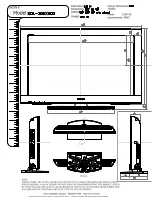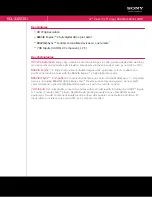
- 12 –
______________________________________________________________________
in_hypalm_aw1_v3.doc
Aw and Temperature
Both water activity (materials) and relative humidity (gases) are referred to the saturation
pressure (ps) or partial pressure of water vapor above pure water:
Aw = p / ps
%RH = 100 x p/ps
The saturation pressure (ps) is strongly dependent on temperature. At normal room temperature,
(ps) increases by about 6.2% for a 1°C increase in temperature. In an open environment that is
not saturated with water vapor, the partial pressure of water vapor (p) does not change with
temperature. In a closed environment, (p) changes proportionally to the °K temperature (°K
temperature = °C tempe 273.16). At normal room temperature, the change in (p) caused
by a small change in the °C temperature is practically negligible. Because (p) does not change
with temperature while (ps) does, the relative humidity of a gas (%RH = 100 x p/ps) is strongly
temperature dependent. At 95 %RH and room temperature, an increase of 1°C results in a
relative humidity decrease of about 6 %RH. At 50%RH, the same temperature increase causes
relative humidity to decrease by about 3 %RH.
The water activity of most hygroscopic products is not as strongly dependent on temperature. At
room conditions, research data typically shows that water activity varies only by roughly 0.0005 to
0.005 Aw (0.05 to 0.5 %RH) when temperature changes by 1°C.
This is explained by the fact that the partial pressure (p) at the surface of a hygroscopic product
does vary with temperature. Above most hygroscopic products, the magnitude of the change in
the partial pressure of water vapor (p) with temperature is similar (but not exactly equal) to the
magnitude of the change of the saturation pressure (ps) above pure water.
In summary, a change in temperature causes the partial pressure of water vapor above a
hygroscopic product to change. At the same time, the partial pressure in the air above the product
is practically unchanged. It follows that any change in the temperature of a hygroscopic product
automatically causes the product to exchange moisture with the air (or gas) that surrounds it.
Moisture is exchanged until the partial water vapor pressure at the surface of the product and in
the air are equal. When measuring water activity, it is essential to keep temperature as constant
as possible.
Applications
The active part of moisture content and, therefore, water activity, provide better information than
the total moisture content regarding the micro-biological, chemical and enzymatic stability of
perishable products such as foods and seeds. For similar reasons, water activity is equally
relevant in the pharmaceutical industry where it provides useful information regarding the
cohesion of tablets and pills, or the adherence of coatings. Water activity can be directly
compared with the relative humidity of the ambient air to prevent dimensional changes in a
product (paper, photographic film), to prevent hygroscopic powders (powdered sugar, salt) from
caking or turning into a solid block, etc
Water activity can be used with some products (mostly synthetic products) as a means of
indirectly measuring the total moisture content. This requires developing sorption isotherms to
this purpose. Sorption isotherms are graphs that provide the relationship between water activity
and moisture content at constant temperature. For most natural products, repeatable sorption
isotherms cannot be reliably developed and water activity should be regarded as separate from
moisture content.













































